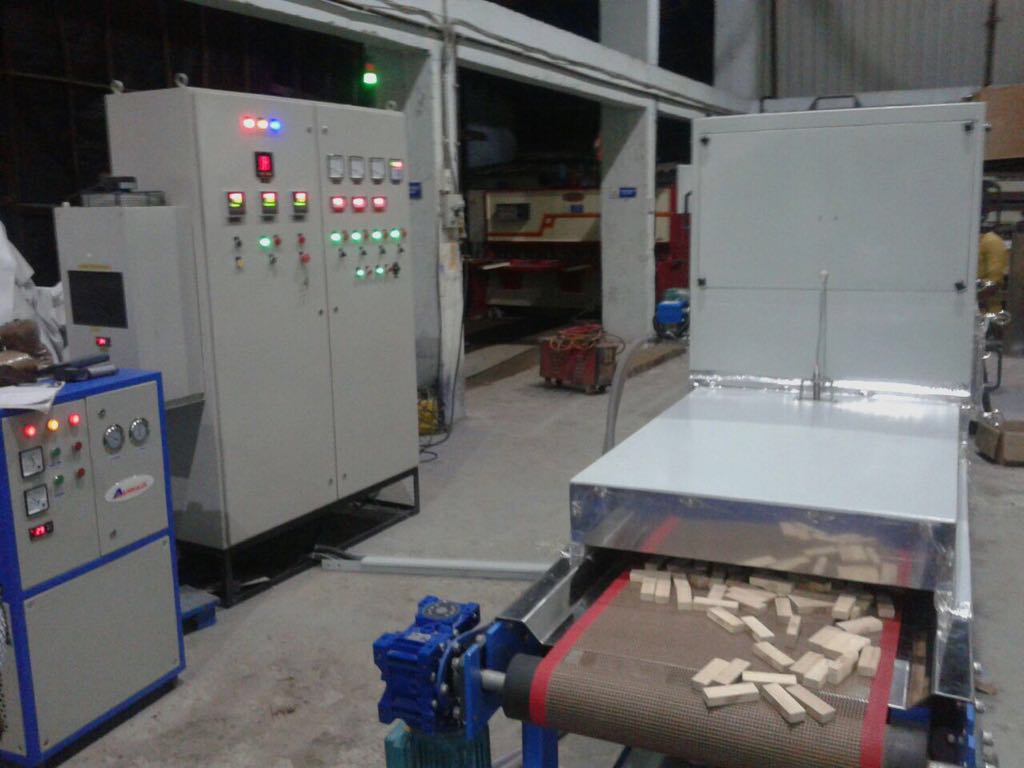Wood drying (also seasoning lumber or wood seasoning) reduces the moisture content of wood before its use. When the drying is done in a kiln, the product is known as kiln-dried timber or lumber, whereas air drying is the more traditional method.
There are two main reasons for drying wood:
Woodworking:
When wood is used as a construction material, whether as a structural support in a building or in woodworking objects, it will absorb or expel moisture until it is in equilibrium with its surroundings. Equilibration (usually drying) causes unequal shrinkage in the wood, and can cause damage to the wood if equilibration occurs too rapidly. The equilibration must be controlled to prevent damage to the wood.
Wood burning:
When wood is burned (firewood), it is usually best to dry it first. Damage from shrinkage is not a problem here, as it may be in the case of drying for woodworking purposes. Moisture affects the burning process, with unburnt hydrocarbons going up the chimney. If a 50% wet log is burnt at high temperature, with good heat extraction from the exhaust gas leading to a 100 °C exhaust temperature, about 5% of the energy of the log is wasted through evaporating and heating the water vapour. With condensers, the efficiency can be further increased; but, for the normal stove, the key to burning wet wood is to burn it very hot, perhaps starting fire with dry wood.
Types of Wood:
Wood is divided, according to its botanical origin, into two kinds: softwoods, from coniferous trees, and hardwoods, from broad-leaved trees. Softwoods are lighter and generally simple in structure, whereas hardwoods are harder and more complex. However, in Australia, softwood generally describes rain forest trees, and hardwood describes Sclerophyll species (Eucalyptus spp).
Wood – Water Relationship:
The timber of living trees and fresh logs contains a large amount of water which often constitutes over 50% of the wood’s weight. Water has a significant influence on wood. Wood continually exchanges moisture or water with its surroundings, although the rate of exchange is strongly affected by the degree to which wood is sealed.
Wood contains water in three forms:
Free water
The bulk of water contained in the cell Lumina is only held by capillary forces. It is not bound chemically and is called free water. Free water is not in the same thermodynamic state as liquid water: energy is required to overcome the capillary forces. Furthermore, free water may contain chemicals, altering the drying characteristics of wood.
Bound or hygroscopic water
Bound water is bound to the wood via hydrogen bonds. The attraction of wood for water arises from the presence of free hydroxyl (OH) groups in the cellulose, hemicelluloses and lignin molecules in the cell wall. The hydroxyl groups are negatively charged. Because water is a polar liquid, the free hydroxyl groups in cellulose attract and hold water by hydrogen bonding.
Vapour
Water in cell Lumina in the form of water vapour is normally negligible at normal temperature and humidity.
Drying defects
Drying defects are the most common form of degrade in timber, next to natural problems such as knots. There are two types of drying defects, although some defects involve both causes:
Defects from shrinkage anisotropy, resulting in warping: cupping, bowing, twisting, crooking, spring and diamonding.
Defects from uneven drying, resulting in the rupture of the wood tissue, such as checks (surface, end and internal), end splits, honey-combing and case hardening. Collapse, often shown as corrugation, or so-called wash boarding of the wood surface, may also occur (Innes, 1996). Collapse is a defect that results from the physical flattening of fibres to above the fibre saturation point and is thus not a form of shrinkage anisotropy.
The five measures of drying quality include:
- Moisture content gradient and presence of residual drying stress (case-hardening);
- Surface, internal and end checks;
- Collapse;
- Distortions;
- Discolouration caused by drying.
We at KERONE have a team of experts to help you with your need for drying of woods in various products range from our wide experience. For any query write us at [email protected] or visit www.kerone.com

